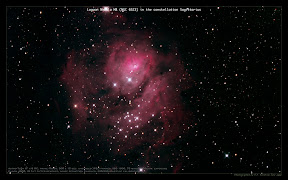- polar alignment using setting circles and computed transit time
- better dynamic range and less noise than previous DSLR
- IR-cut filter removed
- field flattener lens adapter
- images normalized prior to stacking
- new DDP algorithm rather than traditional "stretching"
- nearly doubled the number of exposures taken

You be the judge. 300 x 15-sec. unguided JPEG frames, nearly 75 minutes of overall exposure, modified-Canon XTi, field flattener, calibrated, and processed with DDP.
